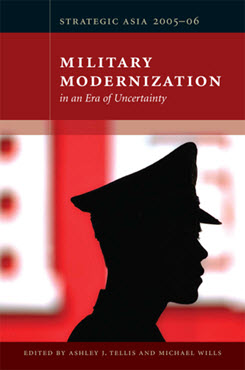Japanese Military Modernization
In Search of a "Normal" Security Role
This chapter analyzes changes in Japan’s security strategy, the modernization of JSDF capabilities, and the upgrading of the U.S.-Japan alliance in the post-Cold War and post-September 11 periods.
EXECUTIVE SUMMARY
This chapter analyzes changes in Japan’s security strategy, the modernization of JSDF capabilities, and the upgrading of the U.S.-Japan alliance in the post-Cold War and post-September 11 periods.
MAIN ARGUMENT
Japan is moving along a long-term trajectory to assume a “normal” security role, as evidenced by (1) the JSDF’s acquisition of enhanced power projection capabilities and (2) the gradual strengthening of the U.S.-Japan alliance to play a more effective part in both regional and global security.
POLICY IMPLICATIONS
- Japan is becoming a more reliable ally that will seek to support U.S. regional and global strategies in the post-September 11 period.
- Like all “normal” allies, Japan is, however, continuing to hedge against over-dependence on its alliance with the U.S. Not only will Japan continue to impose limits on the degree of its military cooperation with the U.S. over such issues as Taiwan and Iran, but it will also explore UN-centered security options.
- As a more “normal” ally seeking reciprocity in alliance ties, Japan will also be more demanding over base issues in Okinawa, seek more equal treatment in decisionmaking within the alliance, and expect support for its UN Security Council bid.
- This “normal” ally behavior notwithstanding, Japan’s increasing military integration with and dependence upon the U.S.—especially when combined with rising concerns regarding China and North Korea—indicate that, ultimately, Japan will see little alternative but to continue to strengthen the bilateral alliance relationship.
Strategic Asia
The Strategic Asia annual edited volume incorporates assessments of economic, political, and military trends and focuses on the strategies that drive policy in the region. Learn more about Strategic Asia.


